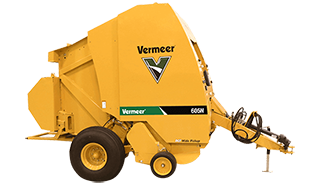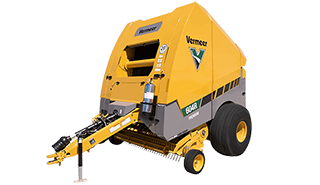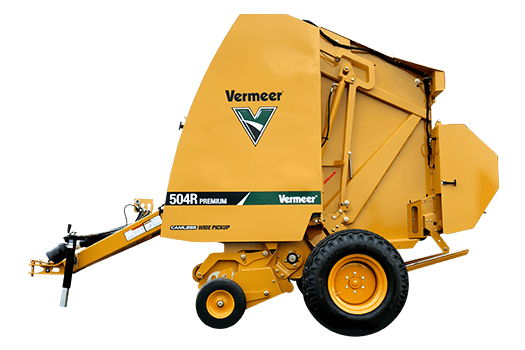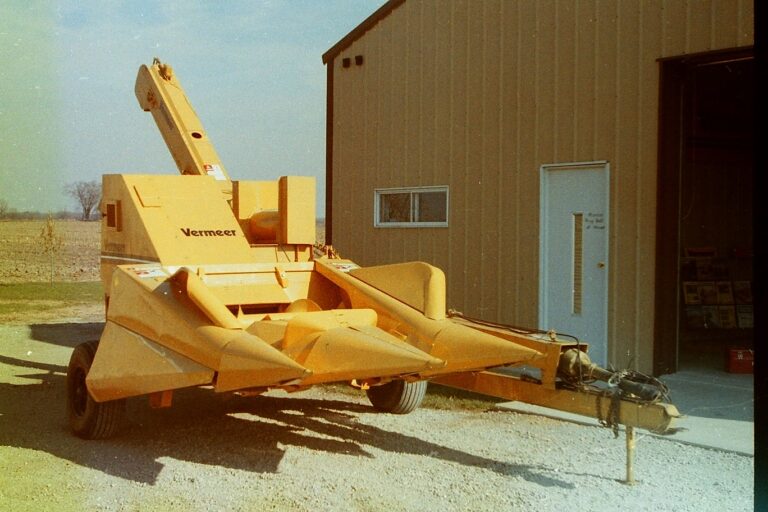
From the Corn Picker to the Round Baler: How Innovation Shaped Vermeer History
February 2024
Gary Vermeer was far too humble to call himself an innovator, but his desire to find a better way certainly made him one. Agriculture was a constant inspiration for him and the rest of the family-owned Vermeer Corporation. From the pull-behind tiller and the corn picker to the round baler that transformed hay production, Vermeer innovation set a precedent in the forage business.
One Vermeer employee was there for nearly all of it.
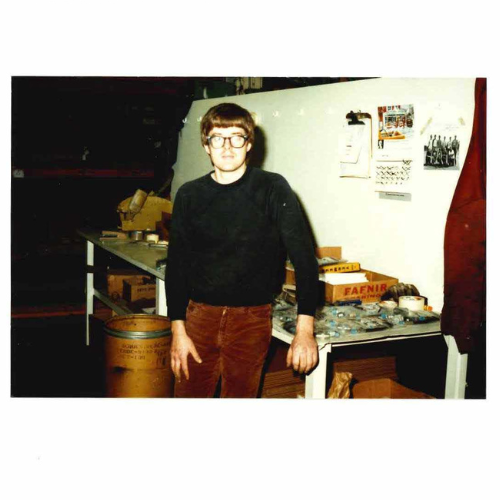
Meet Russell Beyer
Russell Beyer clocked in for the first time as a 17-year-old in 1974. He would spend the next 50 years working at Vermeer in assembly, parts and eventually with Vermeer® Net.
Pull-behind tilling units were the first piece of equipment Beyer worked on before moving to the newly introduced round balers. The Vermeer round baler turned hay production on its nose, setting a precedent of innovation unmatched in the forage world.
“I always said that with the old hay balers, you had to listen to them and if they told you they didn’t want to bale hay that day, you better go back in the house or you’ll be saying a lot of bad words later,” Beyer shared with a chuckle. “The round baler absolutely changed the world.”
At the time, Vermeer was building 30 balers a day. Beyer’s job was to create the belts they needed. At nine belts per baler, he was creating 270 belts daily.
Beyond the round baler
In the 70s, haying season lasted about three months. So, in the off-season, Beyer would transition to the parts world. There, he was further exposed to the constant cycle of innovation happening at the company.
“I remember Gary Vermeer first working on the corn picker,” Beyer remembers. “We had a whole wall of corn pickers and there wasn’t a day that went by that Gary wasn’t in there working on engineering new products.”
The corn picker was one of many innovations that filled equipment rooms back then. As a farmer himself, Gary was constantly thinking of new equipment to meet customers’ needs. It was a customer need that ultimately inspired the round baler. After a cattle producer told Gary he didn’t have enough labor assistance to keep making hay, he went to work designing the first-ever round baler.
That farmer-first mentality still drives the company today. Vermeer has been leading forage industry innovation for more than 50 years since the invention of the round baler. This continuous innovation is driven by the fact that Gary, Vermeer employees and an extensive network of dealers are often forage producers themselves.
“The forage group at Vermeer is a little different than forage groups in other companies,” said Beyer. “The only thing in our forage lineup is hay equipment. We don’t have tractors or combines, just hay equipment. We do hay really well because that’s all we focus on.”
Growing into new markets
With 50 years under his belt, Beyer has seen Vermeer history in real time. It wasn’t long before the commitment to meeting customers’ needs and finding a better way to do things found industries outside of hay making. Since Beyer’s start in 1974, Vermeer has added six business units serving a variety of industries — from tree care and landscaping to underground infrastructure.
“There’s been constant change,” shared Beyer. “Just look at the growth of Vermeer that all stems from the forage equipment. Agriculture put Vermeer on the map. Employees have a lot of pride in that.”
Horizontal directional drilling (HDD) was one of the most impactful innovations Beyer witnessed along the way. Introduced to Vermeer in the 90s, HDD equipment helps crews install underground utilities without disturbing the surface. This trenchless technology, manufactured in Pella, Iowa, is now used around the world.
It’s not often a town of 10,000 people ships out equipment for use around the globe. But for Pella, it’s routine.
“You can travel about anywhere and see Vermeer equipment manufactured in Pella,” said Beyer. “It’s like you’re never far from home.”

What the future holds
After witnessing five decades of constant evolution, it’s hard to imagine where the next five will take Vermeer. But Beyer believes one thing is certain.
“Vermeer will keep producing equipment that meets the needs of our customers. To do that, Vermeer will keep listening to customers’ voices. It might look a lot different than it does now, but I can assure you that if it’s in the forage world, Vermeer will be right there, guaranteed.”
Vermeer Corporation reserves the right to make changes in engineering, design and specifications; add improvements; or discontinue manufacturing at any time without notice or obligation.
Equipment shown is for illustrative purposes only and may display optional accessories or components specific to their global region.
Please contact your local Vermeer dealer for more information on machine specifications.
Vermeer, the Vermeer logo and the Black, White, Green bale wrap color scheme (Vermeer Net) are trademarks of Vermeer Manufacturing Company in the U.S. and/or other countries.
© 2024 Vermeer Corporation. All Rights Reserved.


